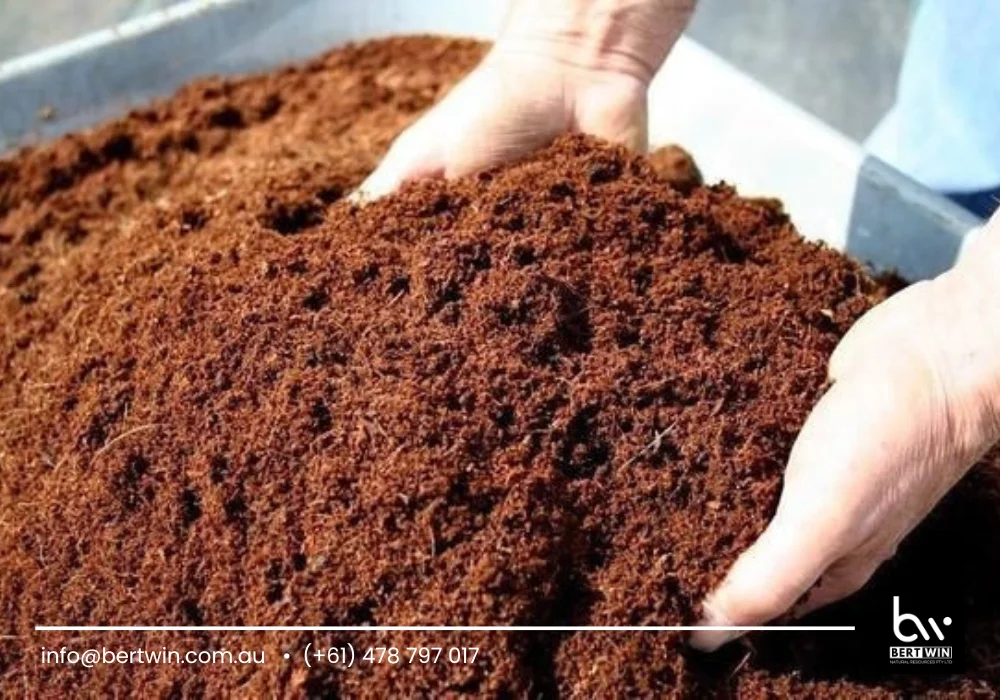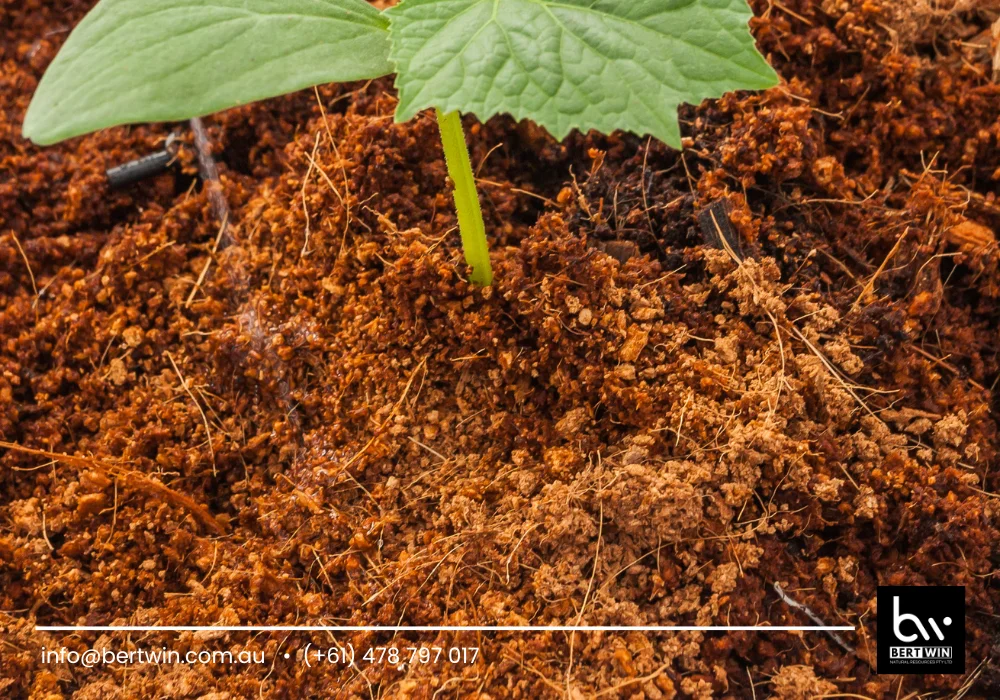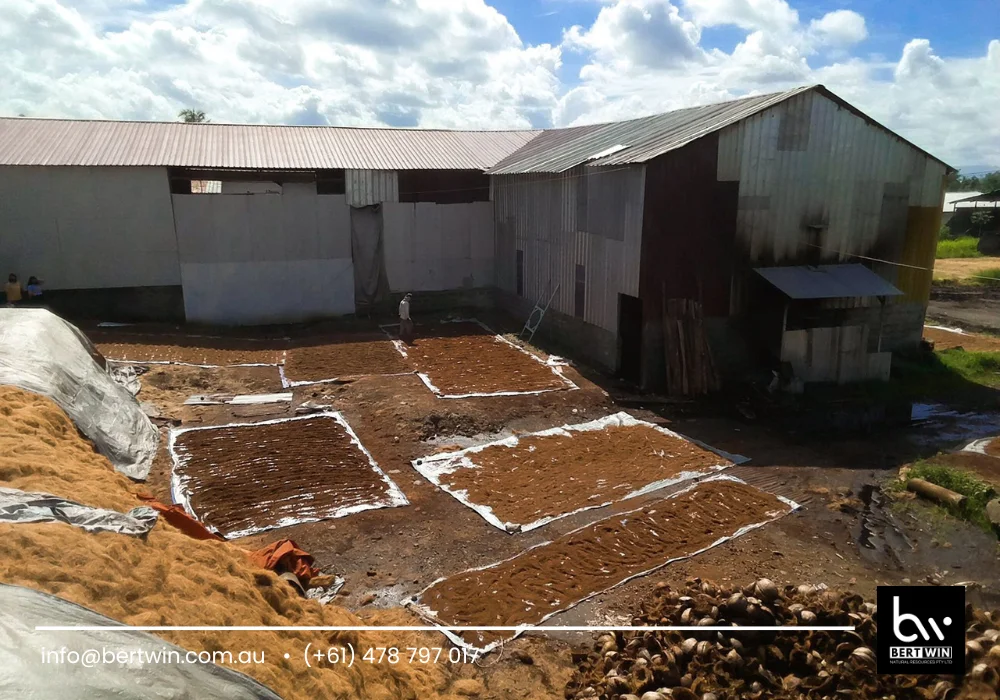Cocopeat for hydroponics is rapidly becoming one of the most popular growing mediums among hydroponic gardeners and farmers. With its excellent moisture retention, aeration properties, and eco-friendly nature, cocopeat provides a sustainable solution for soilless farming. In this article, we will explore how cocopeat for hydroponics can address common challenges faced in hydroponic systems and why it is an ideal choice for modern agriculture.

What is Cocopeat and Why is it Ideal for Hydroponics?
Cocopeat for hydroponics refers to the use of coconut husk fibers that have been processed into a fine, spongy medium for growing plants in a water-based system. The husks are cleaned, dried, and ground into small particles, creating a lightweight, porous substrate. Cocopeat is rich in natural minerals, making it an ideal choice for hydroponic systems where plants rely on a consistent supply of water and nutrients.
Cocopeat is favored in hydroponic systems because it is incredibly effective at retaining moisture while allowing excess water to drain away. This balance between water retention and drainage is crucial for maintaining healthy roots in hydroponic setups. Additionally, cocopeat is environmentally friendly, being a byproduct of coconut processing, which makes it a renewable resource.
Problems Addressed by Cocopeat for Hydroponics
- Inconsistent Water Retention and Drainage
One of the most common problems in hydroponic systems is finding the right balance between water retention and drainage. If the growing medium retains too much water, it can lead to root rot, while insufficient water retention can cause the plants to dry out. Cocopeat for hydroponics solves this issue by providing an optimal balance. Cocopeat can absorb up to eight times its weight in water, ensuring that plants receive a steady supply of moisture. At the same time, it allows excess water to drain away, preventing waterlogging and promoting healthy root growth. - Limited Aeration in Traditional Media
Traditional growing media, such as soil or peat moss, often lack the level of aeration required for hydroponic systems. Roots need access to oxygen to thrive, and without proper aeration, plant health can deteriorate quickly. Cocopeat for hydroponics is highly effective in this regard. Its fibrous texture creates air pockets that facilitate the movement of oxygen to the roots, ensuring optimal conditions for root growth and nutrient uptake. By improving aeration, cocopeat helps prevent common hydroponic problems such as root suffocation and poor nutrient absorption. - Nutrient Imbalance
Another challenge in hydroponics is maintaining a consistent nutrient supply. Traditional media may not retain nutrients effectively, leading to nutrient imbalances that can affect plant growth and health. Cocopeat for hydroponics retains nutrients efficiently and releases them gradually to the plant roots. This ensures that plants receive a steady supply of essential nutrients, helping to prevent nutrient deficiencies or excesses. Furthermore, cocopeat’s slightly acidic pH (around 5.5-6.5) is ideal for most hydroponic plants, allowing for optimal nutrient absorption.
Advantages of Using Cocopeat for Hydroponics

- Water Retention and Moisture Control
As mentioned, cocopeat’s ability to retain water is one of its key advantages. This characteristic makes it especially useful for hydroponic systems that rely on consistent moisture levels. By retaining water in its fibers, cocopeat ensures that the roots have access to the moisture they need throughout the growth cycle. Cocopeat’s moisture retention is also beneficial in dry climates or during hot weather, where other growing media might dry out too quickly. The ability to maintain moisture levels helps reduce the frequency of watering, which saves time and resources. - Environmental Sustainability
Cocopeat for hydroponics is an environmentally sustainable option for soilless growing. It is a renewable resource, as it comes from coconut husks, a byproduct of the coconut industry. This makes cocopeat a more sustainable alternative to traditional media like peat moss, which is harvested from environmentally sensitive wetlands. Additionally, cocopeat is biodegradable and can be composted at the end of its lifecycle, further reducing its environmental impact. By choosing cocopeat, hydroponic growers can contribute to sustainable agriculture practices and reduce their reliance on non-renewable resources. - Reduced Risk of Pests and Diseases
Cocopeat is a relatively sterile medium, meaning it is less likely to harbor pests or diseases compared to soil. This is particularly important in hydroponic systems, where contamination can spread rapidly in water-based environments. By using cocopeat for hydroponics, growers can reduce the risk of common soil-borne diseases such as root rot and fungal infections, which can be detrimental to plant health. Its cleanliness and low susceptibility to pests help ensure a healthier growing environment for your plants. - Ease of Use and Versatility
Cocopeat for hydroponics is easy to handle and can be mixed with other growing media like perlite or vermiculite for added benefits. It is available in various forms, such as loose, compressed blocks, or pellets, making it convenient for both small-scale and large-scale hydroponic systems. Cocopeat’s versatility also extends to different types of hydroponic setups, including deep water culture (DWC), nutrient film technique (NFT), and wick systems. It can be used in both home gardens and commercial greenhouses, making it suitable for a wide range of applications.
How to Use Cocopeat for Hydroponics

- Preparing Cocopeat
Before using cocopeat for hydroponics, it’s important to prepare it properly. If using compressed cocopeat blocks, soak them in water until they expand and loosen up. Rinse the cocopeat thoroughly to remove any excess salts that might be present. - Mixing with Other Media
For enhanced drainage and aeration, cocopeat can be mixed with other materials like perlite or vermiculite. A common ratio is 70% cocopeat and 30% perlite, but this can vary depending on the needs of your plants. - Planting and Maintenance
Once prepared, cocopeat can be placed in hydroponic trays or containers, where seeds or seedlings are planted. It is important to monitor moisture levels and nutrient concentration regularly, ensuring that plants receive optimal conditions for growth. - Reusing Cocopeat
After harvesting, cocopeat can be sterilized and reused for multiple growing cycles, making it a cost-effective and sustainable option for long-term hydroponic gardening.
Conclusion
Cocopeat for hydroponics offers a sustainable and highly effective solution to many challenges faced by hydroponic growers. Its excellent water retention, aeration properties, and ability to support healthy root growth make it an ideal choice for soilless farming. By choosing cocopeat, you can enhance your hydroponic system’s efficiency while contributing to environmental sustainability.
For further information, you may contact WhatsApp at (+61) 478797017 or via email at info@bertwin.com.au.
